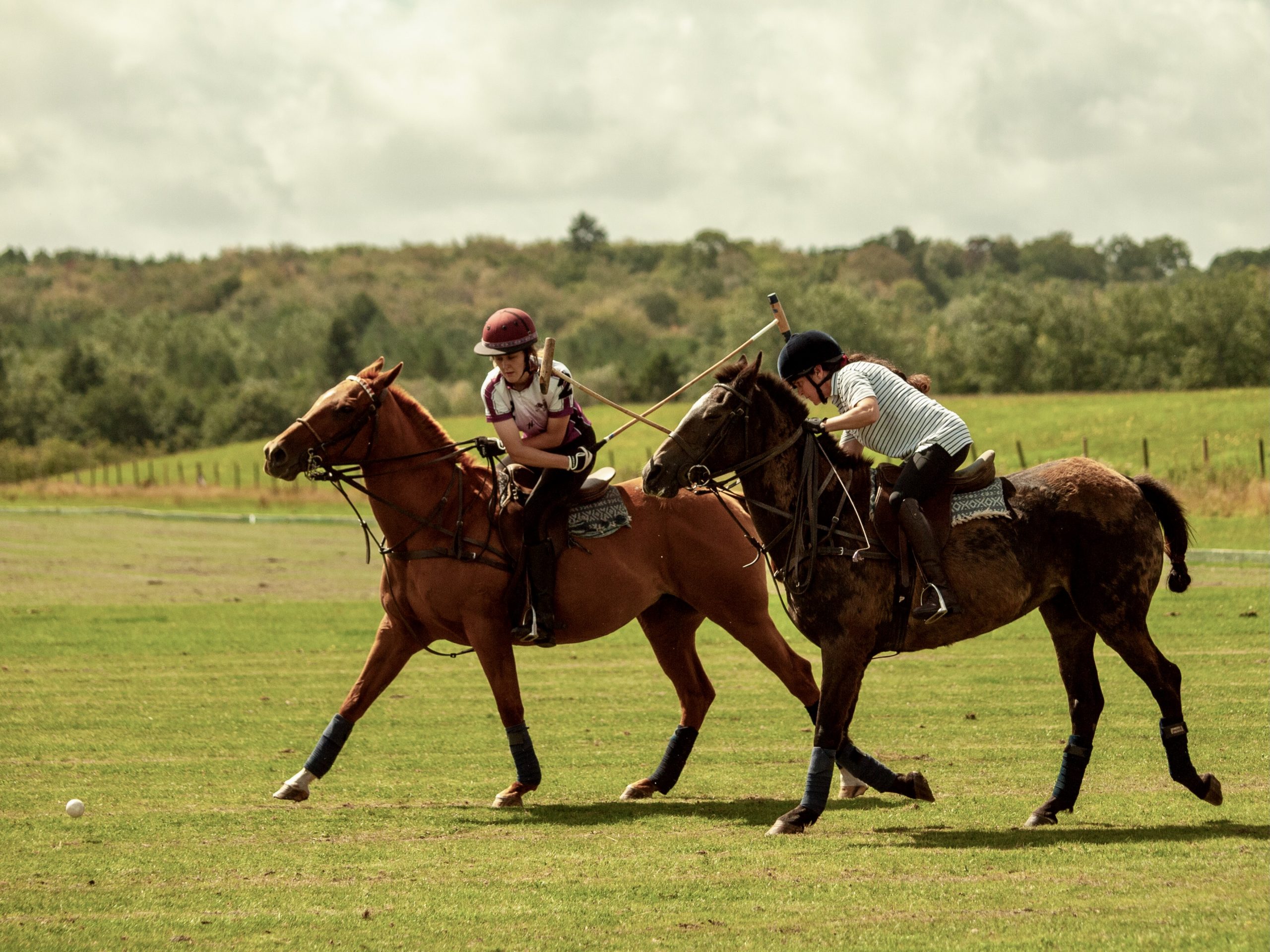I’m Hannah Munson, a physiotherapist at The Physio Therapy Centre in Haywards Heath, and a keen low-goal polo player with over 15 years of riding experience. I understand firsthand the physical demands that riding places on your body. Whether you’re a competitive showjumper, dressage rider, or simply enjoy hacking out, physiotherapy can help you recover from injuries, improve your riding position, and stay pain-free in the saddle.
Common equestrian injuries:
The physical demands of riding, from absorbing the horse’s movement to maintaining the “perfect posture”, can lead to a range of issues, both from acute accidents and chronic overuse.
1. Lower Back Pain: This is perhaps the most common complaint among equestrians. The constant motion of the horse, combined with maintaining a stable and upright position, places significant strain on your muscles. Over time, this can lead to muscle stiffness, imbalances, and chronic pain.
2. Hip and Groin Issues: Riders often experience tightness and discomfort in their hips and groin. The position of your legs in the saddle, particularly when gripping with your thighs, can lead to muscle strains, tendon issues, and reduced hip mobility.
3. Asymmetry and Imbalances: Have you ever felt that your horse is “hollow” on one side, or struggles with a specific lead? If a vet check comes back clear, the imbalance you’re feeling may be coming from your own body. It’s very common for riders to have imbalances in their strength, flexibility, or posture, usually due to muscle weakness or lack of coordination, sometimes due to the specific style of riding (for example, polo!). This asymmetry can directly affect your horse’s performance, leading to their own physical problems and a breakdown in aid communication.
4. Soft Tissue Injuries: Falls are an unfortunate but common part of horse riding. When you fall off, you often instinctively try to break your fall with your arms. This can lead to sprains, strains and muscle tears in your wrists, shoulders, and elbows. Unless you are a candidate for surgery or there are concerns for other bodily structures, a scan is not usually needed to diagnose a muscle tear. This will be assessed on the initial physiotherapy assessment.
5. Fractures and Head Injuries: These are more serious and a definite risk. Common fractures can occur in the collarbone and wrist, often from a fall. Head injuries, including concussions, are a significant concern, which is why a properly fitted helmet is non-negotiable. If you are concerned you may have a fracture or head injury, please attend your nearest emergency department or minor injuries unit (for smaller fractures such as fingers and wrists or if you are uncertain, you can usually be seen faster at a minor injuries unit). If I have any concerns upon meeting you, I will forward you to the correct department with a cover letter to help speed up your treatment.
How physiotherapy can help get you back in the saddle:
My aim is not only to treat acute and chronic injuries, but also help you become a better, stronger, and more balanced rider, reduce risk and re-injury and highlight areas needing development with a thorough, individualised rehab plan. To give you an idea of this, your plan may include:
• Targeted Pain Relief: Targeted strengthening exercises, manual therapy such as soft tissue massage and individual pain management advice can help to reduce your pain and inflammation, whether it’s from a recent injury or a long-standing issue.
• Restoring Movement and Strength: An injury can lead to stiffness and weakness. I’ll guide you through a personalised rehabilitation program to regain your full range of motion, build strength in key areas and restore your body’s function.
• Addressing the Root Cause: By performing a comprehensive assessment I can help identify underlying postural issues and muscular imbalances. I then create a tailored plan to correct these problems, helping you to ride with more fluidity and stability. Where possible, I will give a timeline of recovery to help set your expectations.
• Improving Performance: Physiotherapy isn’t just for when you’re in pain. By improving your core stability, hip flexibility, and overall body awareness, I can help you achieve a more effective and natural riding position. This not only prevents future injuries but is also shown to directly translate to better performance in the saddle.
• Injury Prevention: I can provide you with a specific warm-up and cool-down routine for riding, as well as a long-term exercise plan to maintain your strength and flexibility, keeping you riding for years to come.
Whether you’ve had a fall, are struggling with chronic back pain or simply want to improve your riding position, physiotherapy can make all the difference. If you are able to, it’s helpful for me to see videos of you riding at walk, trot and canter in straight lines and circles in both directions. If you suffered a fall and it was recorded, you can bring this in too.
Here at the Physio Therapy Centre, we treat everything from acute injuries to chronic riding-related pain at our clinic covering Haywards Heath, Lindfield, Burgess Hill, and across Mid Sussex.
You can book online or call our reception on 01444 450162 to make an Initial Appointment. You can also request a free 15 minute discovery call if you would like to discuss your condition first. Thank you for reading and I look forward to meeting you!


